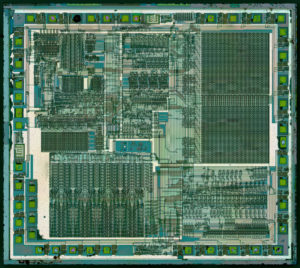 Attack IC TMS320F28232PGFA Software
Attack IC TMS320F28232PGFA Software
Attack IC TMS320F28232PGFA DSP MCU, reset the status of DSP Microcontroller TMS320F28232PGFA from locked to unlocked one through MCU cracking process, software of MCU’s flash memory can readout;
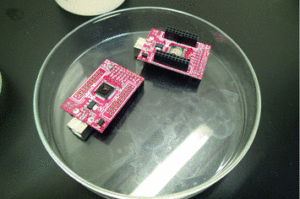
Attack IC TMS320F28232PGFA DSP MCU, reset the status of DSP Microcontroller TMS320F28232PGFA from locked to unlocked one through MCU cracking process, software of MCU’s flash memory can readout
· High-Performance Static CMOS Technology
– Up to 150 MHz (6.67-ns Cycle Time)
– 1.9-V/1.8-V Core, 3.3-V I/O Design
· High-Performance 32-Bit CPU (TMS320C28x)
– IEEE-754 Single-Precision Floating-Point
Unit (FPU) (F2833x only)
– 16 x 16 and 32 x 32 MAC Operations
– 16 x 16 Dual MAC
– Harvard Bus Architecture
– Fast Interrupt Response and Processing
– Unified Memory Programming Model
– Code-Efficient (in C/C++ and Assembly)
· Six-Channel DMA Controller (for ADC, McBSP, ePWM, XINTF, and SARAM)
· 16-Bit or 32-Bit External Interface (XINTF)
– Over 2M x 16 Address Reach
· On-Chip Memory
– F28335, F28235: 256K x 16 Flash, 34K x 16 SARAM
– F28334, F28234: 128K x 16 Flash, 34K x 16 SARAM
– F28332, F28232: 64K x 16 Flash, 26K x 16 SARAM
– 1K x 16 OTP ROM
· Boot ROM (8K x 16)
– With Software Boot Modes (via SCI, SPI, CAN, I2C, McBSP, XINTF, and Parallel I/O)
– Standard Math Tables
· Clock and System Control
– Dynamic PLL Ratio Changes Supported
– On-Chip Oscillator
– Watchdog Timer Module
· GPIO0 to GPIO63 Pins Can Be Connected to One of the Eight External Core Interrupts
· Peripheral Interrupt Expansion (PIE) Block That Supports All 58 Peripheral Interrupts
· 128-Bit Security Key/Lock
– Protects Flash/OTP/RAM Blocks
– Prevents Firmware Reverse Engineering
· Enhanced Control Peripherals
– Up to 18 PWM Outputs
– Up to 6 HRPWM Outputs With 150 ps MEP Resolution
– Up to 6 Event Capture Inputs
– Up to 2 Quadrature Encoder Interfaces
– Up to 8 32-Bit Timers
(6 for eCAPs and 2 for eQEPs)
– Up to 9 16-Bit Timers
(6 for ePWMs and 3 XINTCTRs)
· Three 32-Bit CPU Timers
· Serial Port Peripherals
– Up to 2 CAN Modules
– Up to 3 SCI (UART) Modules
– Up to 2 McBSP Modules (Configurable as SPI)
– One SPI Module
– One Inter-Integrated-Circuit (I2C) Bus
· 12-Bit ADC, 16 Channels
– 80-ns Conversion Rate
– 2 x 8 Channel Input Multiplexer
– Two Sample-and-Hold
– Single/Simultaneous Conversions
– Internal or External Reference
· Up to 88 Individually Programmable, Multiplexed GPIO Pins With Input Filtering
· JTAG Boundary Scan Support (1)
· Advanced Emulation Features
– Analysis and Breakpoint Functions
– Real-Time Debug via Hardware
· Development Support Includes
– ANSI C/C++ Compiler/Assembler/Linker
– Code Composer Studio™ IDE
– DSP/BIOS™
– Digital Motor Control and Digital Power Software Libraries
Low-Power Modes and Power Savings
– IDLE, STANDBY, HALT Modes Supported
– Disable Individual Peripheral Clocks
· Endianness: Little Endian
· Package Options:
– Lead-free, Green Packaging
– Low-Profile Quad Flatpack (PGF, PTP)
– MicroStar BGA™ (ZHH)
– Plastic BGA (ZJZ)
· Temperature Options:
– A: –40°C to 85°C (PGF, ZHH, ZJZ)
– S: –40°C to 125°C (PTP, ZJZ)
– Q: –40°C to 125°C (PTP, ZJZ)
 Recover IC ST62T65C6 Software
Recover IC ST62T65C6 Software
The ST62T65C6 microcontroller, developed by STMicroelectronics, is widely used in embedded systems, industrial automation, and consumer electronics. However, many of these chips come with protected firmware, making it challenging to access, modify, or migrate stored binary data. At [Your Company Name], we specialize in recovering IC ST62T65C6 software, helping clients readout, crack, and decrypt locked memory archives for system analysis, replication, or debugging purposes.
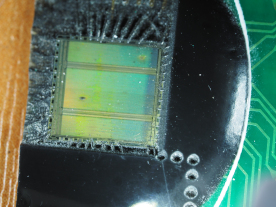
Recover IC ST62T65C6 Software from MCU ST62T65C6 flash memory, reset the security fuse bit status by focus ion beam technique which is the most important part for microcontroller unlocking, readout firmware from MCU
Recover IC ST62T65C6 Software from MCU ST62T65C6 flash memory, reset the security fuse bit status by focus ion beam technique which is the most important part for microcontroller unlocking, readout firmware from MCU;
Features
■ 3.0 to 6.0V supply operating range
■ 8 MHz maximum clock frequency
■ -40 to +125°C operating temperature range
■ Run, Wait and Stop modes
■ 5 interrupt vectors
■ Look-up table capability in program memory
■ Data storage in program memory: user selectable size
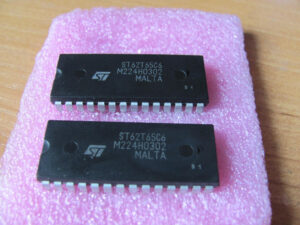
STMicroelectronics द्वारा विकसित ST62T65C6 माइक्रोकंट्रोलर का व्यापक रूप से एम्बेडेड सिस्टम, औद्योगिक स्वचालन और उपभोक्ता इलेक्ट्रॉनिक्स में उपयोग किया जाता है। हालाँकि, इनमें से कई चिप्स संरक्षित फ़र्मवेयर के साथ आते हैं, जिससे संग्रहीत बाइनरी डेटा तक पहुँचना, संशोधित करना या माइग्रेट करना चुनौतीपूर्ण हो जाता है। हम IC ST62T65C6 सॉफ़्टवेयर को पुनर्प्राप्त करने में विशेषज्ञ हैं, जो क्लाइंट को सिस्टम विश्लेषण, प्रतिकृति या डिबगिंग उद्देश्यों के लिए लॉक किए गए मेमोरी अभिलेखागार को पढ़ने, क्रैक करने और डिक्रिप्ट करने में मदद करते हैं।
■ Data RAM: 128 bytes
■ Data EEPROM: 128 bytes (not in ST6255C)
■ User programmable options
■ 21 I/O pins, fully programmable as:
– Input with pull-up resistor
– Input without pull-up resistor
– Input with interrupt generation
– Open-drain or push-pull output
– Analog Input
■ 8 I/O lines can sink up to 30 mA to drive LEDs or TRIACs directly
– 8-bit Timer/Counter with 7-bit programmable prescaler
■ 8-bit Auto-reload timer with 7-bit programmable prescaler (AR Timer)
■ Digital watchdog
■ Oscillator safe guard (not in ST6265B ROM devices)
■ Low voltage detector for safe reset (not in ST6265B ROM devices)
■ 8-bit A/D converter with 13 analog inputs
■ 8-bit synchronous peripheral interface (SPI)
■ On-chip clock oscillator can be driven by quartz crystal, ceramic resonator or RC network
■ User configurable power-on reset
(See end of Datasheet for Ordering Information)
Table 1. Device summary
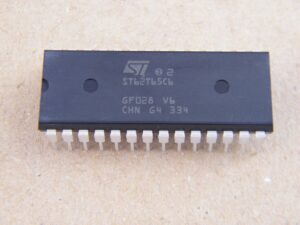
Mikrokontroler ST62T65C6, opracowany przez STMicroelectronics, jest szeroko stosowany w systemach wbudowanych, automatyce przemysłowej i elektronice użytkowej. Jednak wiele z tych układów jest wyposażonych w chronione oprogramowanie układowe, co utrudnia dostęp, modyfikację lub migrację przechowywanych danych binarnych. Specjalizujemy się w odzyskiwaniu oprogramowania IC ST62T65C6, pomagając klientom odczytywać, łamać i odszyfrowywać zablokowane archiwa pamięci w celu analizy systemu, replikacji lub celów debugowania.
■ One external non-maskable interrupt
■ ST626x-EMU2 Emulation and Development
System (connects to an MS-DOS PC via a parallel port)
Circuit Engineering Company Limited continues to be recognized as the Southern China Leader in Services for read IC, MCU recovery, Chip decrypt, Microcontroller copy service. With the advancement of today’s modern circuit board technology, it is more important than ever to have specialists available to help you at a moment’s notice. Our engineering and commercial teams collectively have a vast amount of electronic experience covering field include Consumer Electronics, Industrial Automation Electronics, Wireless Communication Electronics., etc. For more information please contact us through email.
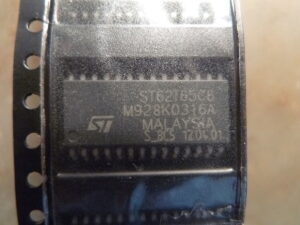
Il microcontrollore ST62T65C6, sviluppato da STMicroelectronics, è ampiamente utilizzato nei sistemi embedded, nell’automazione industriale e nell’elettronica di consumo. Tuttavia, molti di questi chip sono dotati di firmware protetto, il che rende difficile accedere, modificare o migrare i dati binari archiviati. Siamo specializzati nel recupero del software IC ST62T65C6, aiutando i clienti a leggere, decifrare e decifrare gli archivi di memoria bloccati per scopi di analisi, replica o debug del sistema.
 Read Microcontroller HT68F40 Heximal
Read Microcontroller HT68F40 Heximal
Read Microcontroller HT68F40 Heximal from flash memory, and then copy MCU HT68F40 code to new MCU which will provide the same functions as master microcomputer HT68F40 by crack Microprocessor security fuse bit;
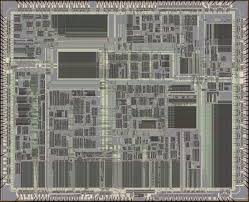
Read Microcontroller HT68F40 Heximal from flash memory, and then copy MCU HT68F40 code to new MCU which will provide the same functions as master microcomputer HT68F40 by crack Microprocessor security fuse bit;
Features
CPU Features
· Operating Voltage:
Peripheral Features
· Flash Program Memory: 1K´14 ~ 12K´16
fSYS= 8MHz: 2.2V~5.5V
fSYS= 12MHz: 2.7V~5.5V
fSYS= 20MHz: 4.5V~5.5V
Up to 0.2ms instruction cycle with 20MHz system clock at VDD=5V
Power down and wake-up functions to reduce power consumption
Five oscillators:
External Crystal – HXT
External 32.768kHz Crystal – LXT
· RAM Data Memory: 64´8 ~ 576´8
· EEPROM Memory: 32´8~256´8
· Watchdog Timer function
· Up to 50 bidirectional I/O lines
· Software controlled 4-SCOM lines LCD driver with 1/2 bias
· Multiple pin-shared external interrupts
· Multiple Timer Module for time measure, input capture, compare match output, PWM output
External RC – ERC
Internal RC – HIRC
Internal 32kHz RC – LIRC
single pulse output function
Serial Interfaces Module – SIM for SPI or I2C
Dual Comparator functions
Multi-mode operation: NORMAL, SLOW, IDLE and SLEEP
Fully integrated internal 4MHz, 8MHz and 12MHz
Dual Time-Base functions for generation of fixed time interrupt signals
Low voltage reset function oscillator requires no external components
All instructions executed in one or two instruction cycles
Table read instructions
63 powerful instructions
Up to 12-level subroutine nesting
Bit manipulation instruction
· Low voltage detect function
· Wide range of available package types
General Description
The HT68FXX series of devices are Flash Memory I/O type 8-bit high performance RISC architecture microcontrollers. Offering users the convenience of Flash Memory multi-programming features, these devices also include a wide range of functions and features. Other memory includes an area of RAM Data Memory as well as an area of EEPROM memory for storage of non-volatile data such as serial numbers, calibration data etc for the purpose of read Microcontroller.
Multiple and extremely flexible Timer Modules provide timing, pulse generation and PWM generation functions. Analog features include dual comparator functions. Communication with the outside world is catered for by including fully integrated SPI or I2C interface functions, two popular interfaces which provide designers with a means of easy communication with external peripheral hardware. Protective features such as an internal Watchdog Timer, Low Voltage Reset and Low Voltage Detector coupled with excellent noise immunity and ESD protection ensure that reliable operation is maintained in hostile electrical environments.
A full choice of HXT, LXT, ERC, HIRC and LIRC oscillator functions are provided including a fully integrated system oscillator which requires no external components for its implementation. The ability to operate and switch dynamically between a range of operating modes using different clock sources gives users the ability to optimise microcontroller operation and minimise power consumption.
The inclusion of flexible I/O programming features, Time-Base functions along with many other features ensure that the devices will find excellent use in applications such as electronic metering, environmental monitoring, handheld instruments, household appliances, electronically controlled tools, motor driving in addition to many others.
 Read MCU PIC16F688 Software
Read MCU PIC16F688 Software
The PIC16F688 microcontroller, developed by Microchip Technology, is a popular choice for embedded systems due to its compact size, low power consumption, and versatile features. However, many applications store protected or encrypted firmware in the flash memory or EEPROM, making it difficult to access, modify, or duplicate the program files. At [Your Company Name], we specialize in reading MCU PIC16F688 software, helping clients decode, decrypt, and unlock secured firmware archives for recovery, analysis, or duplication purposes.
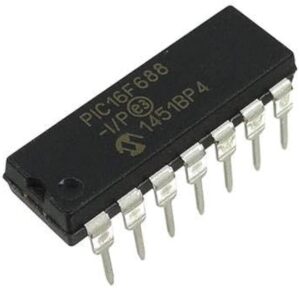
Los microcontroladores como el PIC16F688 están equipados con fusibles de seguridad y mecanismos de cifrado para evitar el acceso no autorizado a los datos binarios almacenados en la memoria flash o EEPROM. Esta protección garantiza la seguridad de los archivos de firmware confidenciales, pero también presenta dificultades para los usuarios que necesitan restaurar, copiar o clonar el programa embebido por motivos legítimos, como actualizaciones del sistema, ingeniería inversa o creación de copias de seguridad. Nuestro proceso: Cómo leemos el software del MCU PIC16F688
Extracción de firmware: Con herramientas especializadas, eludimos los mecanismos de seguridad para leer de forma segura la memoria flash y EEPROM bloqueada, extrayendo el archivo de programa binario o hexadecimal sin dañar el microcontrolador.
Understanding PIC16F688 Firmware Protection
Microcontrollers like the PIC16F688 are equipped with security fuses and encryption mechanisms to prevent unauthorized access to the binary data stored in flash or EEPROM memory. This protection ensures that sensitive firmware files remain secure but also creates challenges for users who need to restore, copy, or clone the embedded program for legitimate reasons, such as system upgrades, reverse engineering, or backup creation.
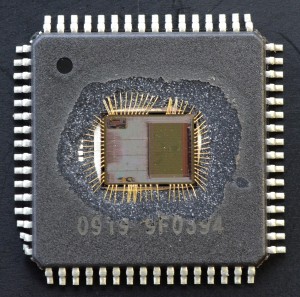
Read MCU PIC16F688 Software out in the format of heximal or binary, silicon package of Microcontroller PIC16F688 will be dissolved by chemical solution according to MCU crack principle, and copy firmware to new microcomputer PIC16F688 for MCU clone
Read MCU PIC16F688 Software out in the format of heximal or binary, silicon package of Microcontroller PIC16F688 will be dissolved by chemical solution according to MCU crack principle, and copy firmware to new microcomputer PIC16F688 for Microprocessor PIC16F688 clone;
High-Performance RISC CPU:
· Only 35 Instructions to Learn:
– All single-cycle instructions except branches
· Operating Speed:
– DC – 20 MHz oscillator/clock input
– DC – 200 ns instruction cycle
· Interrupt Capability
· 8-level Deep Hardware Stack
Low-Power Features:
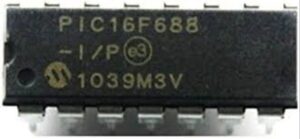
PIC16F688 gibi mikrodenetleyiciler, flaş veya EEPROM belleğinde depolanan ikili verilere yetkisiz erişimi önlemek için güvenlik sigortaları ve şifreleme mekanizmalarıyla donatılmıştır. Bu koruma, hassas aygıt yazılımı dosyalarının güvenli kalmasını sağlar ancak sistem yükseltmeleri, tersine mühendislik veya yedekleme oluşturma gibi meşru nedenlerle gömülü programı geri yüklemesi, kopyalaması veya klonlaması gereken kullanıcılar için zorluklar yaratır.
· Standby Current:
– 50 nA @ 2.0V, typical
· Operating Current:
– 11 ìA @ 32 kHz, 2.0V, typical
– 220 ìA @ 4 MHz, 2.0V, typical
· Watchdog Timer Current:
– 1 ìA @ 2.0V, typical
· Direct, Indirect and Relative Addressing modes
Peripheral Features:
Special Microcontroller Features:
· Precision Internal Oscillator:
– Factory calibrated to ±1%
– Software selectable frequency range of 8 MHz to 125 kHz
– Software tunable
– Two-Speed Start-Up mode
– Crystal fail detect for critical applications
– Clock mode switching during operation for power savings
· Power-Saving Sleep mode
· Wide Operating Voltage Range (2.0V-5.5V)
· Industrial and Extended Temperature Range
· Power-on Reset (POR)
· Power-up Timer (PWRT) and Oscillator Start-up Timer (OST)
· Enhanced Low-Current Watchdog Timer (WDT) with on-chip oscillator (software selectable nominal 268 seconds with full prescaler) with software enable
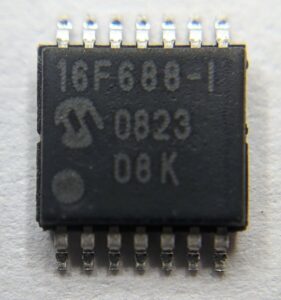
Microcontroladores como o PIC16F688 são equipados com fusíveis de segurança e mecanismos de criptografia para impedir o acesso não autorizado aos dados binários armazenados na memória flash ou EEPROM. Essa proteção garante que os arquivos de firmware confidenciais permaneçam seguros, mas também cria desafios para os usuários que precisam restaurar, copiar ou clonar o programa embarcado por motivos legítimos, como atualizações do sistema, engenharia reversa ou criação de backup.
· Multiplexed Master Clear with Weak Pull-up or Input Only Pin
· Programmable Code Protection
· High-Endurance Flash/EEPROM Cell:
– 100,000 write Flash endurance
– 1,000,000 write EEPROM endurance
– Flash/Data EEPROM retention: > 40 years
· 12 I/O Pins with Individual Direction Control:
– High-current source/sink for direct LED drive
– Interrupt-on-change pin
– Individually programmable weak pull-ups
– Ultra Low-Power Wake-up
· Analog Comparator module with:
– Two analog comparators
– Programmable On-chip Voltage Reference (CVREF) module (% of VDD)
– Comparator inputs and outputs externally accessible
· A/D Converter:
– 10-bit resolution and 8 channels
· Timer0: 8-bit Timer/Counter with 8-bit Programmable Prescaler
· Enhanced Timer1:
– 16-bit timer/counter with prescaler
– External Timer1 Gate (count enable)
– Option to use OSC1 and OSC2 in LP mode as
Timer1 oscillator if INTOSC mode selected
· Enhanced USART Module:
– Supports RS-485, RS-232, LIN 2.0/2.1 and J2602
– Auto-Baud Detect
– Auto-wake-up on Start bit
· In-Circuit Serial Programming™ (ICSP™) via two pins
 Read IC Microchip PIC32MX440F512H Binary
Read IC Microchip PIC32MX440F512H Binary
Read IC Microchip PIC32MX440F512H Binary out from MCU PIC32MX440F512H flash memory, crack Microcontroller PIC32MX440F512H tamper resistance system and then extract firmware from Microprocessor memory;

Read IC Microchip PIC32MX440F512H Binary out from MCU PIC32MX440F512H flash memory, crack Microcontroller PIC32MX440F512H tamper resistance system and then extract firmware from Microprocessor memory
High-Performance 32-bit RISC CPU:
· MIPS32® M4K® 32-bit core with 5-stage pipeline
· 80 MHz maximum frequency
· 1.56 DMIPS/MHz (Dhrystone 2.1) performance at 0 wait state Flash access
· Single-cycle multiply and high-performance divide unit
· MIPS16e® mode for up to 40% smaller code size
· Two sets of 32 core register files (32-bit) to reduce interrupt latency
· Prefetch Cache module to speed execution from Flash
Microcontroller Features:
· Operating temperature range of -40ºC to +105ºC
· Operating voltage range of 2.3V to 3.6V
· 32K to 512K Flash memory (plus an additional 12 KB of boot Flash)
· 8K to 32K SRAM memory
· Pin-compatible with most PIC24/dsPIC® DSC devices
· Multiple power management modes
· Multiple interrupt vectors with individually programmable priority
· Fail-Safe Clock Monitor Mode
· Configurable Watchdog Timer with on-chip Low-Power RC Oscillator for reliable operation
Peripheral Features:
· Atomic SET, CLEAR and INVERT operation on select peripheral registers
· Up to 4-channel hardware DMA with automatic data size detection
· USB 2.0-compliant full-speed device and On-The-Go (OTG) controller
· USB has a dedicated DMA channel
· 3 MHz to 25 MHz crystal oscillator
· Internal 8 MHz and 32 kHz oscillators
· Separate PLLs for CPU and USB clocks
· Two I2C™ modules
– RS-232, RS-485 and LIN support
– IrDA® with on-chip hardware encoder and decoder if read IC
· Up to two SPI modules
· Parallel Master and Slave Port (PMP/PSP) with 8-bit and 16-bit data and up to 16 address lines
· Hardware Real-Time Clock and Calendar (RTCC)
· Five 16-bit Timers/Counters (two 16-bit pairs combine to create two 32-bit timers)
· Five capture inputs
· Five compare/PWM outputs
· Five external interrupt pins
· High-Speed I/O pins capable of toggling at up to 80 MHz
· High-current sink/source (18 mA/18 mA) on all I/O pins
· Configurable open-drain output on digital I/O pins
Debug Features:
· Two programming and debugging Interfaces:
– 2-wire interface with unintrusive access and real-time data exchange with application
– 4-wire MIPS® standard enhanced JTAG interface
· Unintrusive hardware-based instruction trace
· IEEE Standard 1149.2-compatible (JTAG) boundary scan
Analog Features:
· Up to 16-channel 10-bit Analog-to-Digital Converter:
– 1000 ksps conversion rate
– Conversion available during Sleep, Idle
· Two Analog Comparators after read IC
 Break Chip ATmel ATmega48PV Heximal
Break Chip ATmel ATmega48PV Heximal
Break Chip Atmel ATmega48P Heximal: Unlocking Protected Firmware and EEPROM Data
The Atmel ATmega48P microcontroller is widely used in embedded systems due to its low-power RISC architecture, flash memory, and EEPROM storage. However, many of these chips are secured with protective encryption, making it difficult to access, modify, or duplicate their firmware binary, EEPROM data, and heximal program files. At [Your Company Name], we specialize in breaking the Atmel ATmega48P chip, helping clients restore, decrypt, and unlock protected memory for debugging, cloning, and system migration.
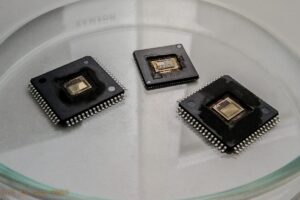
Atmel ATmega48P mikrodenetleyicisi, düşük güç tüketimli RISC mimarisi, flaş belleği ve EEPROM depolaması nedeniyle gömülü sistemlerde yaygın olarak kullanılır. Ancak, bu yongaların çoğu koruyucu şifrelemeyle güvence altına alınmıştır ve bu da ürün yazılımı ikili, EEPROM verileri ve heximal program dosyalarına erişmeyi, bunları değiştirmeyi veya çoğaltmayı zorlaştırır. Circuit engineering co.,ltd’de Atmel ATmega48P yongasını kırma konusunda uzmanlaşıyoruz ve müşterilerin hata ayıklama, klonlama ve sistem geçişi için korumalı belleği geri yüklemelerine, şifresini çözmelerine ve kilidini açmalarına yardımcı oluyoruz.
How We Break ATmega48P Heximal and Firmware Protection
-
Firmware Extraction & Memory Dumping
Using advanced techniques, we copy and decrypt the locked flash and EEPROM memory from the ATmega48P microcontroller. This process allows us to retrieve the heximal binary archive stored in the chip. -
Decrypting & Cracking Secured Program Files
Once extracted, the firmware binary is analyzed to decode and decrypt the encrypted program structure. Our advanced tools help us hack and open the protected EEPROM memory, providing full access to critical system data. -
Disassembly & Source Code Reconstruction
The extracted heximal data and binary firmware are disassembled and converted into human-readable source code, enabling further modifications, optimizations, or system enhancements. -
Cloning & Duplication of ATmega48P Firmware
After successfully cracking the protective encryption, we copy, clone, and duplicate the embedded firmware, allowing clients to use the program on other ATmega48P microcontrollers or transfer it to a compatible system.
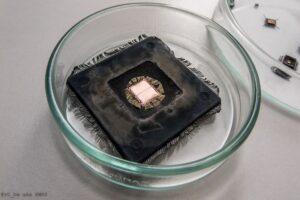
El microcontrolador Atmel ATmega48P se utiliza ampliamente en sistemas embebidos gracias a su arquitectura RISC de bajo consumo, memoria flash y almacenamiento EEPROM. Sin embargo, muchos de estos chips están protegidos con cifrado, lo que dificulta el acceso, la modificación o la duplicación de su binario de firmware, datos EEPROM y archivos de programa heximales. En circuit engineering co.,ltd, nos especializamos en descifrar el chip Atmel ATmega48P, ayudando a nuestros clientes a restaurar, descifrar y desbloquear la memoria protegida para la depuración, la clonación y la migración de sistemas.
Why Choose Our ATmega48P Reverse Engineering Service?
-
Expertise in Atmel Microcontrollers – We specialize in hacking, unlocking, and decrypting ATmega48P firmware, ensuring precise extraction and recovery.
-
Advanced Security Bypass Techniques – We use cutting-edge decryption and firmware cracking methods to break even the most protected and locked memory files.
-
Confidentiality & Precision – Our team ensures that restored and decoded firmware remains confidential and optimized for further use.
If you need to restore, crack, or duplicate a secured ATmega48P firmware archive, contact us today. Our break chip Atmel ATmega48P heximal service ensures a seamless firmware recovery and program extraction process, empowering you with full control over your embedded systems.
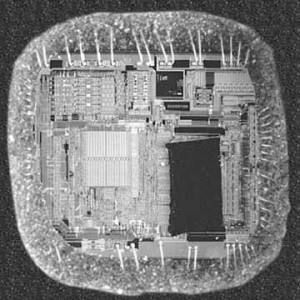
Break Chip ATmel ATmega48PV and extract heximal from MCU ATmega48PV program memory, unlock microcontroller ATmega48PV security fuse by focus ion beam, and recover firmware from both of its memory
Break Chip ATmel ATmega48PV and extract heximal from MCU ATmega48PV program memory, unlock microcontroller ATmega48PV security fuse by focus ion beam, and recover firmware from both of its memory;
Features
· High Performance, Low Power Atmel® AVR® 8-Bit Microcontroller
· Advanced RISC Architecture
– 131 Powerful Instructions – Most Single Clock Cycle Execution
– 32 x 8 General Purpose Working Registers when break Chip
– Fully Static Operation
– Up to 20 MIPS Throughput at 20 MHz
– On-chip 2-cycle Multiplier
High Endurance Non-volatile Memory Segments
– 4/8/16K Bytes of In-System Self-Programmable Flash progam memory
– 256/512/512 Bytes EEPROM
– 512/1K/1K Bytes Internal SRAM
– Write/Erase Cycles: 10,000 Flash/100,000 EEPROM
– Data retention: 20 years at 85°C/100 years at 25°C(1)
8-bit Microcontroller
– Optional Boot Code Section with Independent Lock Bits
In-System Programming by On-chip Boot Program
True Read-While-Write Operation
– Programming Lock for Software Security
Peripheral Features
– Two 8-bit Timer/Counters with Separate Prescaler and Compare Mode
– One 16-bit Timer/Counter with Separate Prescaler, Compare Mode, and Capture Mode
– Real Time Counter with Separate Oscillator
– Six PWM Channels for the purpose of break Chip
– 8-channel 10-bit ADC in TQFP and QFN/MLF package Temperature Measurement
– 6-channel 10-bit ADC in PDIP Package Temperature Measurement
– Programmable Serial USART
– Master/Slave SPI Serial Interface
– Byte-oriented 2-wire Serial Interface (Philips I2C compatible)
– Programmable Watchdog Timer with Separate On-chip Oscillator
– On-chip Analog Comparator
– Interrupt and Wake-up on Pin Change if break Chip
Special Microcontroller Features
– Power-on Reset and Programmable Brown-out Detection
– Internal Calibrated Oscillator
– External and Internal Interrupt Sources
– Six Sleep Modes: Idle, ADC Noise Reduction, Power-save, Power-down, Standby, and Extended Standby I/O and Packages
– 23 Programmable I/O Lines
– 28-pin PDIP, 32-lead TQFP, 28-pad QFN/MLF and 32-pad QFN/MLF
Operating Voltage:
– 1.8 – 5.5V for ATmega48P/88P/168PV
– 2.7 – 5.5V for ATmega48P/88P/168P
Temperature Range:
– -40°C to 85°C
Speed Grade:
– ATmega48P/88P/168PV: 0 – 4 MHz @ 1.8 – 5.5V, 0 – 10 MHz @ 2.7 – 5.5V
– ATmega48P/88P/168P: 0 – 10 MHz @ 2.7 – 5.5V, 0 – 20 MHz @ 4.5 – 5.5V
Low Power Consumption at 1 MHz, 1.8V, 25°C:
– Active Mode: 0.3 mA
– Power-down Mode: 0.1 µA
– Power-save Mode: 0.8 µA (Including 32 kHz RTC)
 Break Microcontroller Samsung S3F9454 Software
Break Microcontroller Samsung S3F9454 Software
Break Microcontroller Samsung S3F9454 locked memory and extract MCU S3F9454 software from flash memory, the program will be cloned from Microprocessor through universal programmer, an adaptive socket will be required for the whole process;
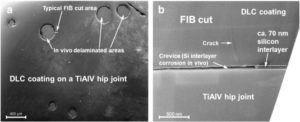
Break Microcontroller Samsung S3F9454 locked memory and extract MCU S3F9454 software from flash memory, the program will be cloned from Microprocessor through universal programmer, an adaptive socket will be required for the whole process
The SAM88RCRI instruction set is designed to support the large register file. It includes a full complement of 8-bit arithmetic and logic operations. There are 41 instructions. No special I/O instructions are necessary because I/O control and data registers are mapped directly into the register file. Flexible instructions for bit addressing, rotate, and shift operations complete the powerful data manipulation capabilities of the SAM88RCRI instruction set when break Microcontroller.
![Мікроконтролер Samsung S3F9454 широко використовується в промисловому, автомобільному та побутовому електроніці завдяки розширеним функціям та закріпленій вбудованій програмній програмі. Однак, коли прошивка, двійкова або EEPROM пам'яті заблокована або зашифрована, доступ до початкового вихідного коду стає проблемою. У [назві вашої компанії] ми спеціалізуємось на порушенні програмного забезпечення для мікроконтролера Samsung S3F9454, допомагаючи клієнтам розшифрувати, витягнути та відновити захищені дані для оптимізації системи, налагодження чи міграції.](https://www.ic-crack.com/wp-content/uploads/2014/03/3-300x240.png)
Мікроконтролер Samsung S3F9454 широко використовується в промисловому, автомобільному та побутовому електроніці завдяки розширеним функціям та закріпленій вбудованій програмній програмі. Однак, коли прошивка, двійкова або EEPROM пам’яті заблокована або зашифрована, доступ до початкового вихідного коду стає проблемою. У [назві вашої компанії] ми спеціалізуємось на порушенні програмного забезпечення для мікроконтролера Samsung S3F9454, допомагаючи клієнтам розшифрувати, витягнути та відновити захищені дані для оптимізації системи, налагодження чи міграції.
To access an individual register, an 8-bit address in the range 0-255 or the 4-bit address of a working register is specified. Paired registers can be used to construct 13-bit program memory or data memory addresses. For detailed information about register addressing, please refer to Chapter 2, “Address Spaces”.
ADDRESSING MODES
There are six addressing modes: Register (R), Indirect Register (IR), Indexed (X), Direct (DA), Relative (RA), and Immediate (IM). For detailed descriptions of these addressing modes, please refer to Chapter 3, “Addressing Modes”.
FLAG DESCRIPTIONS
33Overflow Flag (FLAGS.4, V)
The V flag is set to “1″ when the result of a two’s-complement operation is greater than + 127 or less than – 128.
It is also cleared to “0″ following logic operations.
![Microcontrolerul Samsung S3F9454 este utilizat pe scară largă în electronica industrială, auto și de consum datorită caracteristicilor sale avansate și a firmware -ului încorporat securizat. Cu toate acestea, atunci când firmware -ul, memoria binară sau EEPROM este blocată sau criptată, accesarea codului sursă original devine o provocare. La [numele companiei dvs.], suntem specializați în spargerea software -ului microcontroller Samsung S3F9454, ajutând clienții să decripteze, să extragă și să restabilească datele protejate pentru optimizarea sistemului, depanarea sau migrația.](https://www.ic-crack.com/wp-content/uploads/2014/03/4.jpeg)
Microcontrolerul Samsung S3F9454 este utilizat pe scară largă în electronica industrială, auto și de consum datorită caracteristicilor sale avansate și a firmware -ului încorporat securizat. Cu toate acestea, atunci când firmware -ul, memoria binară sau EEPROM este blocată sau criptată, accesarea codului sursă original devine o provocare. La [numele companiei dvs.], suntem specializați în spargerea software -ului microcontroller Samsung S3F9454, ajutând clienții să decripteze, să extragă și să restabilească datele protejate pentru optimizarea sistemului, depanarea sau migrația.
Following arithmetic, logic, rotate, or shift operations, the sign bit identifies the state of the MSB of the result. A logic zero indicates a positive number and a logic one indicates a negative number.
Zero Flag (FLAGS.6, Z)
For arithmetic and logic operations, the Z flag is set to “1″ if the result of the operation is zero. For operations that test register bits, and for shift and rotate operations, the Z flag is set to “1″ if the result is logic zero.
Carry Flag (FLAGS.7, C)
The C flag is set to “1″ if the result from an arithmetic operation generates a carry-out from or a borrow to the bit 7 position (MSB). After rotate and shift operations, it contains the last value shifted out of the specified register. Program instructions can set, clear, or complement the carry flag.
The Samsung S3F9454 microcontroller is widely used in industrial, automotive, and consumer electronics due to its advanced features and secured embedded firmware. However, when the firmware, binary, or EEPROM memory is locked or encrypted, accessing the original source code becomes a challenge. At [Your Company Name], we specialize in breaking microcontroller Samsung S3F9454 software, helping clients decrypt, extract, and restore protected data for system optimization, debugging, or migration.
![Microcontroller Samsung S3F9454 е широко използван в индустриалната, автомобилната и потребителската електроника поради своите усъвършенствани функции и защитената вградена фърмуер. Въпреки това, когато фърмуерът, бинарният или паметта на EEPROM са заключени или криптирани, достъпът до оригиналния изходен код се превръща в предизвикателство. На [Името на вашата компания] ние сме специализирани в счупването на микроконтролер Samsung S3F9454 софтуер, помагайки на клиентите да декриптират, извлекат и възстановят защитените данни за оптимизация на системата, отстраняване на грешки или миграция.](https://www.ic-crack.com/wp-content/uploads/2014/03/4-300x200.jpg)
Microcontroller Samsung S3F9454 е широко използван в индустриалната, автомобилната и потребителската електроника поради своите усъвършенствани функции и защитената вградена фърмуер. Въпреки това, когато фърмуерът, бинарният или паметта на EEPROM са заключени или криптирани, достъпът до оригиналния изходен код се превръща в предизвикателство. На [Името на вашата компания] ние сме специализирани в счупването на микроконтролер Samsung S3F9454 софтуер, помагайки на клиентите да декриптират, извлекат и възстановят защитените данни за оптимизация на системата, отстраняване на грешки или миграция.
Our Approach to Breaking Samsung S3F9454 Software
-
Firmware Extraction & Memory Dumping – Using specialized tools, we unlock and copy the secured EEPROM and flash memory, retrieving the binary or heximal firmware archive stored inside the protected microcontroller.
-
Decryption & Binary Analysis – The extracted firmware file is often encrypted or encoded. We apply advanced cracking and decoding techniques to convert the raw heximal program data into a readable source code structure.
-
Disassembly & Reverse Engineering – The binary firmware is decompiled and analyzed, allowing us to restore the embedded program into a structured format. This step helps in hacking and cloning the secured microcontroller software for further modifications.
-
Firmware Duplication & Reprogramming – Once decoded and unlocked, the source code and program data can be duplicated, cloned, or copied for backup, migration to new hardware, or custom software development.
Why Choose Our Services?
The Samsung S3F9454 microcontroller features secure memory protection, real-time processing capabilities, and embedded flash storage, making it highly resilient against unauthorized access. Our firmware cracking and reverse engineering solutions ensure that even the most locked and protected microcontroller software can be restored and decrypted successfully.
If you need to extract, modify, or replicate the firmware or EEPROM memory inside a Samsung S3F9454 microcontroller, contact us today. We provide professional hacking, decoding, and duplication services to help you recover and optimize secured embedded systems.
 Break Microcontroller NEC UPD78F0881 Software
Break Microcontroller NEC UPD78F0881 Software
We can break Microcontroller Chip NEC UPD78F0881, please view below the integrated circuit features for your reference:
Item
µPD78F0828A
µPD780828A
µPD780826A
ROM
59.5 Kbytes
Flash EE
60 Kbytes
Mask ROM
48 Kbytes
Mask ROM
32 Kbytes after break Microcontroller
Mask ROM
Hi-speed RAM
1024 bytes
Expansion RAM
2016 bytes
480 bytes
28 bytes
Memory space
64 Kbytes
General register
8 bits – 32 registers (8 bit x 8 x 4 bank)
Main system clock
0.25 µs/0.5 µs/1 µs/2 µs/4 µs (at 8 MHz) Instruction set when break Microcontroller
· 16-bit operation
· Multiplication/division (8 bits × 8 bits, 16 bits ÷ 8 bits)
· Bit manipulation (set, reset, test, boolean operation)
· BCD adjustment, etc.
I/O port
59 in total
Input ports: 5
Output ports: 16
I/O ports: 38
A/D converter
8 bit x 5 channels
Serial I/F
3-wire mode: 1 channel
2-wire/3-wire mode: 1 channel
UART: 1 channel
Timer if break Microcontroller
16 bit timer / event counter: 1 channel
8 bit timer / event counter: 2 channels
8 bit interval timer: 1 channel
Watch timer: 1 channel
Watchdog timer: 1 channel
Timer output
3 outputs (8-bit PWM output × 2)
Clock output
8 MHz, 4 MHz, 2 MHz, 1 MHz, 500 KHz, 250 KHz, 125 KHz, 62.5 KHz
@f = 8 MHz X Sound Generator 1 output LCD for the purpose of break Microcontroller
Segment output: 28, Common output: 4
CAN
1 channel
Vectored interrupt
Non-maskable interrupt: 1 (internal)
Maskable interrupt: 20 (internal)
External interrupt: 3
Software interrupt: 1
Operating voltage
range
V = 4.0 V to 5.5 V
DD
Package
 Break Microcontroller TI MSP430F448 Firmware
Break Microcontroller TI MSP430F448 Firmware
Break Microcontroller TI MSP430F448 can help engineer to disable the protective mechanism of MCU MSP430F448, the firmware in the flash memory can be readout directly with universal programmer, then Microprocessor MSP430F448 cloning can be proceed.
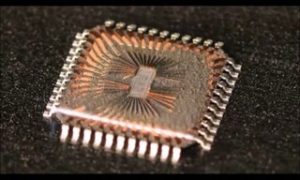
Break Microcontroller TI MSP430F448 can help engineer to disable the protective mechanism of MCU MSP430F448, the firmware in the flash memory can be readout directly with universal programmer
Low Supply-Voltage Range, 1.8 V to 3.6 V
Ultralow-Power Consumption:
– Active Mode: 280 µA at 1 MHz, 2.2 V
– Standby Mode: 1.1 µA
– Off Mode (RAM Retention): 0.1 µA
Five Power Saving Modes
Wake-Up From Standby Mode in 6 µs 16-Bit RISC Architecture,
125-ns Instruction Cycle Time
12-Bit A/D Converter With Internal
Reference, Sample-and-Hold and Autoscan
Feature
16-Bit Timer With Three† or Seven‡
Capture/Compare-With-Shadow Registers, Timer_B Serial Onboard Programming,
No External Programming Voltage Needed Programmable Code Protection by Security Fuse
Integrated LCD Driver for Up to 160 Segments
Family Members Include:
– MSP430F435:
16KB+256B Flash Memory,
512B RAM
– MSP430F436:
24KB+256B Flash Memory,
1KB RAM
– MSP430F437:
32KB+256B Flash Memory,
1KB RAM
16-Bit Timer With Three Capture/Compare Registers, Timer_A On-Chip Comparator Serial Communication Interface (USART), Select Asynchronous UART or Synchronous SPI by Software;
Two USARTs (USART0, USART1) In MSP430x44x Devices One USART (USART0) In MSP430x43x
Devices Brownout Detector Supply Voltage Supervisor/Monitor With Programmable Level Detection
– MSP430F447:
32KB+256B Flash Memory,
1KB RAM
– MSP430F448:
48KB+256B Flash Memory,
2KB RAM
– MSP430F449:
60KB+256B Flash Memory,
2KB RAM
For Complete Module Descriptions, See The MSP430x4xx Family User’s Guide
Literature Number SLAU056 ’F435, ’F436, and ’F437 devices ’F447, ’F448, and ’F449 devices
description
The Texas Instruments MSP430 series is an ultralow-power microcontroller family consisting of several devices featuring different sets of modules targeted to various applications. The microcontroller is designed to be battery operated for use in extended-time applications.
The MSP430 achieves maximum code efficiency with its 16-bit RISC architecture, 16-bit CPU-integrated registers, and a constant generator. The digitally-controlled oscillator provides wake-up from low-power mode to active mode in less than 6 µs.
The MSP430x43x and the MSP430x44x series are microcontroller configurations with two built-in 16-bit timers, a fast 12-bit A/D converter, one or two universal serial synchronous/asynchronous communication interfaces (USART), 48 I/O pins, and a liquid crystal driver (LCD) with up to 160 segments.
![A TI MSP430F448 mikrovezérlő egy alacsony teljesítményű, nagy teljesítményű chip, amelyet általában ipari, orvosi és autóipari alkalmazásokban használnak. Beágyazott flash memória, EEPROM és rögzített firmware -védelemmel rendelkezik az illetéktelen hozzáférés megakadályozása érdekében. Vannak azonban olyan esetek, amikor a felhasználóknak vissza kell állítaniuk, másolni vagy klónozniuk kell a firmware -t - akár biztonsági másolatot, hibakeresést, rendszer migrációját vagy fordított tervezését. A [Az Ön cégneve] oldalán a Mikrovezérlő TI MSP430F448 firmware törésére szakosodunk, segítve az ügyfelek dekódolását, dekódolását és a védett adatok feloldását az elemzéshez és a módosításhoz.](https://www.ic-crack.com/wp-content/uploads/2014/03/1-300x225.png)
A TI MSP430F448 mikrovezérlő egy alacsony teljesítményű, nagy teljesítményű chip, amelyet általában ipari, orvosi és autóipari alkalmazásokban használnak. Beágyazott flash memória, EEPROM és rögzített firmware -védelemmel rendelkezik az illetéktelen hozzáférés megakadályozása érdekében. Vannak azonban olyan esetek, amikor a felhasználóknak vissza kell állítaniuk, másolni vagy klónozniuk kell a firmware -t – akár biztonsági másolatot, hibakeresést, rendszer migrációját vagy fordított tervezését. A [Az Ön cégneve] oldalán a Mikrovezérlő TI MSP430F448 firmware törésére szakosodunk, segítve az ügyfelek dekódolását, dekódolását és a védett adatok feloldását az elemzéshez és a módosításhoz.
The TI MSP430F448 microcontroller is a low-power, high-performance chip commonly used in industrial, medical, and automotive applications. It features embedded flash memory, EEPROM, and secured firmware protection to prevent unauthorized access. However, there are cases where users need to restore, copy, or clone the firmware—whether for backup, debugging, system migration, or reverse engineering. At [Your Company Name], we specialize in breaking the microcontroller TI MSP430F448 firmware, helping clients decode, decrypt, and unlock protected data for analysis and modification.
Procedures to Crack TI MSP430F448 Firmware Protection
![Микроконтроллер TI MSP430F448 представляет собой высокопроизводительный чип, обычно используемый в промышленных, медицинских и автомобильных приложениях. Он оснащен встроенной флэш -памятью, EEPROM и защитой прошивки для предотвращения несанкционированного доступа. Тем не менее, есть случаи, когда пользователям необходимо восстановить, копировать или клонировать прошивку - будь то для резервного копирования, отладки, миграции системы или обратной инженерии. В [название вашей компании] мы специализируемся на нарушении прошивки микроконтроллера TI MSP430F448, помогая клиентам декодировать, расшифровать и разблокировать защищенные данные для анализа и модификации.](https://www.ic-crack.com/wp-content/uploads/2014/03/2-300x197.png)
Микроконтроллер TI MSP430F448 представляет собой высокопроизводительный чип, обычно используемый в промышленных, медицинских и автомобильных приложениях. Он оснащен встроенной флэш -памятью, EEPROM и защитой прошивки для предотвращения несанкционированного доступа. Тем не менее, есть случаи, когда пользователям необходимо восстановить, копировать или клонировать прошивку – будь то для резервного копирования, отладки, миграции системы или обратной инженерии. В [название вашей компании] мы специализируемся на нарушении прошивки микроконтроллера TI MSP430F448, помогая клиентам декодировать, расшифровать и разблокировать защищенные данные для анализа и модификации.
-
Firmware Extraction – We use advanced hardware tools to read and copy the flash and EEPROM memory, even when the firmware is protected or encrypted. Our techniques allow us to bypass security restrictions and gain access to the heximal or binary data stored in the microcontroller.
-
Disassembly and Reverse Engineering – After extracting the firmware, we decode and disassemble the locked program into machine-readable instructions. This process helps restore the embedded source code and allows deeper analysis of system behavior.
-
Decryption and Source Code Reconstruction – If the firmware is encrypted, we apply specialized algorithms to decrypt and reconstruct the original program. Our goal is to unlock the protected data archive and convert it into a readable and modifiable format.
-
Cloning and Duplication – Once the firmware is extracted and decrypted, we assist in duplicating or cloning the embedded program, making it transferable to other microcontrollers or systems. This step is crucial for system upgrades, debugging, and functional replication.
Why Choose Our TI MSP430F448 Hacking Service?
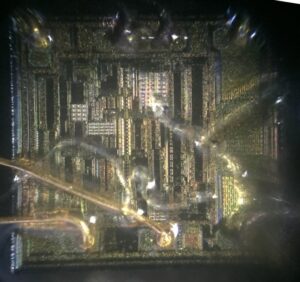
Stručnost u sigurnosnom zaobilaženju Microcontroller – Naš tim ima veliko iskustvo u pucanju zaključanog firmvera i dešifriranju osiguranih memorijskih datoteka.
Napredne tehnike dešifriranja – koristimo najnovije alati za hakiranje firmvera i obrnuti inženjering kako bismo osigurali točno i učinkovito vađenje podataka.
Stroga povjerljivost – Svi projekti upravljaju se s potpunom sigurnošću i povjerljivošću, osiguravajući integritet podataka i privatnost.
-
Expertise in Microcontroller Security Bypass – Our team has extensive experience in cracking locked firmware and decrypting secured memory files.
-
Advanced Decryption Techniques – We use the latest firmware hacking and reverse engineering tools to ensure accurate and efficient data extraction.
-
Strict Confidentiality – All projects are handled with full security and confidentiality, ensuring data integrity and privacy.
If you need to break, unlock, or copy the protected firmware of the TI MSP430F448 microcontroller, contact us today. Our professional reverse engineering solutions will help you restore and duplicate secured software with precision and reliability.
 Break IC Renesas R5F2L388CNFP Firmware
Break IC Renesas R5F2L388CNFP Firmware
Break IC Renesas R5F2L388CNFP protection, decapsulate the silicon package of Microcontroller R5F2L388CNFP and readout firmware from MCU R5F2L388CNFP data memory and code memory, then make R5F2L388CNFP MCU clone units through this firmware;
Break IC Renesas R5F2L388CNFP protection, decapsulate the silicon package of Microcontroller R5F2L388CNFP and readout firmware from MCU R5F2L388CNFP data memory and code memory, then make R5F2L388CNFP MCU clone units through this firmware
Features
The R8C/L35C Group, R8C/L36C Group, R8C/L38C Group, and R8C/L3AC Group of single-chip MCUs when incorporate the R8C CPU core, which implements a powerful instruction set for a high level of efficiency and supports a 1 Mbyte address space, allowing execution of instructions at high speed. In addition, the CPU core integrates a multiplier for high-speed operation processing.
Power consumption is low, and the supported operating modes allow additional power control. These MCUs are designed to maximize EMI/EMS performance.
Integration of many peripheral functions, including multifunction timer and serial interface, helps reduce the number of system components.
These groups have data flash (1 KB × 4 blocks) with the background operation (BGO) function.
Specification
CPU
Central processing unit R8C CPU core for the purpose of IC break
· Number of fundamental instructions: 89
· Minimum instruction execution time:
50 ns (f(XIN) = 20 MHz, VCC = 2.7 to 5.5 V)
200 ns (f(XIN) = 5 MHz, VCC = 1.8 to 5.5 V)
· Multiplier: 16 bits × 16 bits → 32 bits
· Multiply-accumulate instruction: 16 bits × 16 bits + 32 bits → 32 bits
· Operating mode: Single-chip mode (address space: 1 Mbyte)
Memory ROM/RAM
Data flash
Refer to Tables 1.7 to 1.10 Product Lists.
Power Voltage detection circuit
Supply
Voltage
Detection
· Power-on reset
· Voltage detection 3 (detection level of voltage detection 0 and voltage detection 1 selectable)
I/O Ports Programmable
I/O ports
R8C/L35C Group
· CMOS I/O ports: 41, selectable pull-up resistor
· High current drive ports: 5
R8C/L36C Group
· CMOS I/O ports: 52, selectable pull-up resistor
· High current drive ports: 8
R8C/L38C Group
· CMOS I/O ports: 68, selectable pull-up resistor
· High current drive ports: 8 R8C/L3AC Group
· CMOS I/O ports: 88, selectable pull-up resistor
· High current drive ports: 16 Clock Clock generation circuits
4 circuits: XIN clock oscillation circuit
XCIN clock oscillation circuit (32 kHz)
High-speed on-chip oscillator (with frequency adjustment function)
Low-speed on-chip oscillator
· Oscillation stop detection:
XIN clock oscillation stop detection function
· Frequency divider circuit:
Division ratio selectable from 1, 2, 4, 8, and 16
· Low-power-consumption modes:
Standard operating mode (high-speed clock, low-speed clock, high-
speed on-chip oscillator, low-speed on-chip oscillator), wait mode,
stop mode, power-off mode
Real-time clock (timer RE)
Interrupts
R8C/L35C Group
· Number of interrupt vectors: 69
· External Interrupt: 9 (INT × 5, key input × 4)
· Priority levels: 7 levels
R8C/L36C Group
· Number of interrupt vectors: 69
· External Interrupt: 12 (INT × 8, key input × 4)
· Priority levels: 7 levels
R8C/L38C Group
· Number of interrupt vectors: 69
· External Interrupt: 16 (INT × 8, key input × 8)
· Priority levels: 7 levels
R8C/L3AC Group
· Number of interrupt vectors: 69
· External Interrupt: 16 (INT × 8, key input × 8)
· Priority levels: 7 levels
Watchdog Timer
· 14 bits × 1 (with prescaler)
· Selectable reset start function
· Selectable low-speed on-chip oscillator for watchdog timer
DTC (Data Transfer Controller)
· 1 channel
· Activation sources: 38
· Transfer modes: 2 (normal mode, repeat mode)
· Transfer modes: 2 (normal mode, repeat mode)
